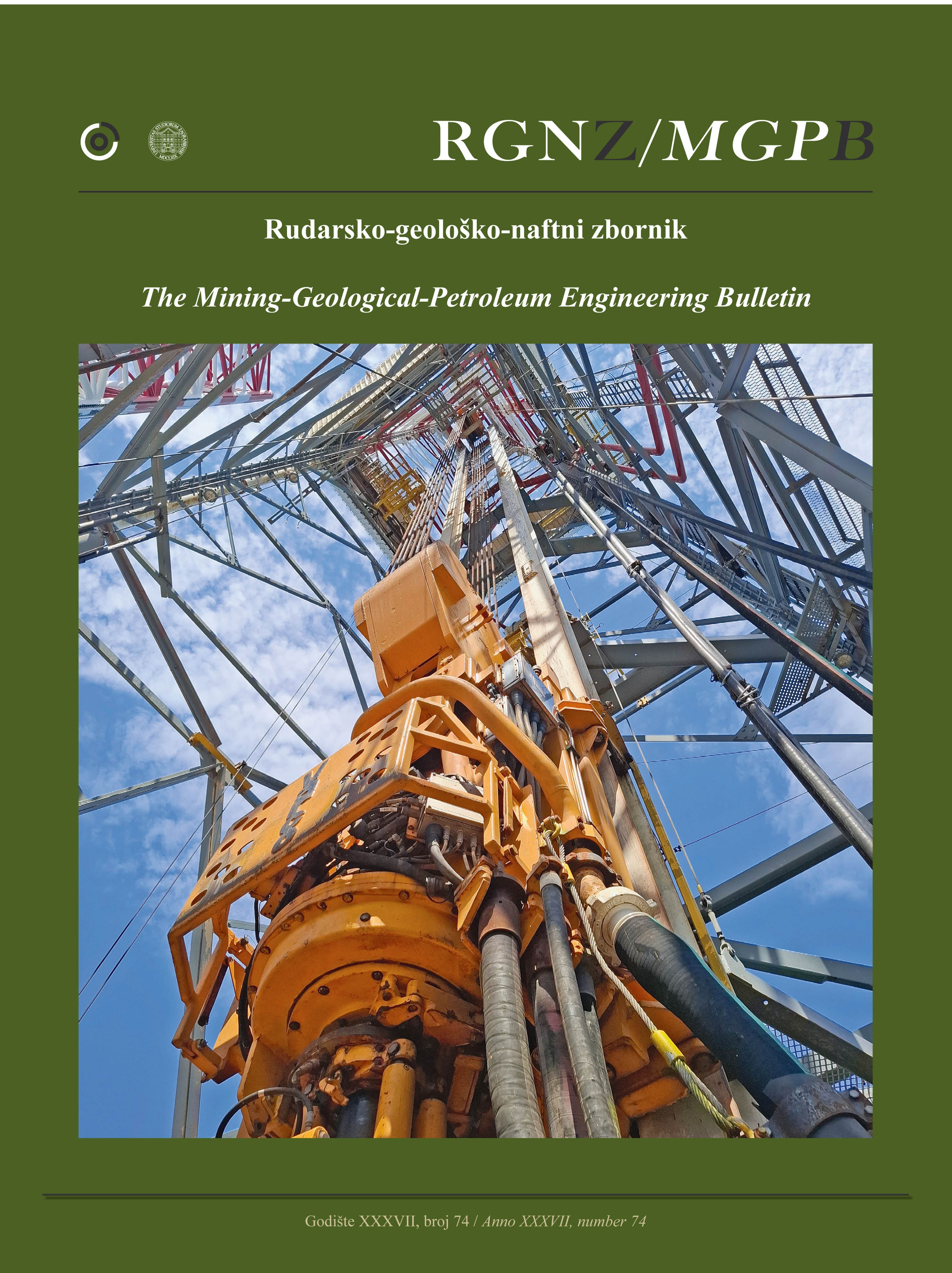An investigation into the pretreating of a low-grade bauxite ore using magnetic separation and flotation processes
DOI:
https://doi.org/10.17794/rgn.2025.3.9Keywords:
low-grade bauxite, silica, removal efficiency, magnetic separation, reverse flotationAbstract
A bauxite reserve with an Al2O3 grade less than 50% is classified as low-grade bauxite due to the presence of impurities such as silica and iron oxide, thus pretreatment before concentration (Bayer process) is required to reduce SiO2 and Fe2O3. Hence, this study investigates the feasibility of removing SiO2 and Fe2O3 from a low-grade bauxite ore using magnetic separation and flotation processes. Different magnetic methods were utilized to eliminate iron impurities, and the results indicated that the high-gradient magnetic separation (HGMS) with an intensity of 18000 Gauss had the best output in reducing Fe2O3 with 18.03% Fe2O3 content and a 31.15% removal rate. In the next step, reverse and direct flotation techniques were employed to remove silica from the sample. The findings showed that the highest removal efficiency of SiO2 was achieved using the reverse flotation process at 750 g/t Armac C collector, 1200 g/t starch, 40 g/t MIBC and 11 pulp pH. Ultimately, the HGMS followed by reverse flotation with an Armac C collector (750 g/t) was implemented on the bauxite sample, and the content of Fe2O3, and SiO2, silica removal efficiency, and Al2O3/SiO2 mass ratio was found to be 17.76, and 22.11%, 45.22% and 1.63, respectively, indicating that HGMS followed by flotation is not effective enough in reducing iron oxide and silica, and therefore requires further pretreatment and/or the study of a suitable alternative method. The behaviour observed may be because iron oxide and silica minerals were fine-grained diseminated in the bauxite sample.
Downloads
Published
Issue
Section
License
Copyright (c) 2025 Amirhossein Ashrafi, Asghar Azizi, Zahra Bahri

This work is licensed under a Creative Commons Attribution 4.0 International License.
Creative Commons-BY
Authors who publish with this journal agree to the following terms:
In agreeing this form, you certify that:
- You read the ethical codex of the RGN zbornik available at journal web.
- You submitted work is your original work, and has not previously been published and does not include any form of plagiarism.
- You own copyright in the submitted work, and are therefore permitted to assign the licence to publish to RGN zbornik.
- Your submitted work contains no violation of any existing copyright or other third party right or any material of an obscene, libellous or otherwise unlawful nature.
- You have obtained permission for and acknowledged the source of any illustrations, diagrams or other material included in the work of which you are not the copyright owner.
- You have taken due care to ensure the accuracy of the work, and that, to the best of your knowledge, there are no false statements made within it.
- All co-authors of this submitted work are aware of, and in agreement with, the terms of this licence and that the submitted manuscript has been approved by these authors.
Publication licence
You retain copyright in your submitted work, according to journal license policy (CC-BY). By signing this form you agree that RGN zbornik may publish it under the publication licence. In summary the licence allows the following:
Anyone is free:
- To copy, distribute, display, and perform the work.
- To make derivative works.
Under the following conditions:
- The original author must always be given credit.
- The work may not be used for commercial purposes.
- If the work is altered, transformed, or built upon, the resulting work may only be distributed under a licence identical to this one.
Exceptions to the licence
In addition to publishing the work printed under the above licence, RGN zbornik will also enable the work to be visible online.
The journal editorial can change the licence rules anytime but it cannot retroactively restrict author(s) rights.


